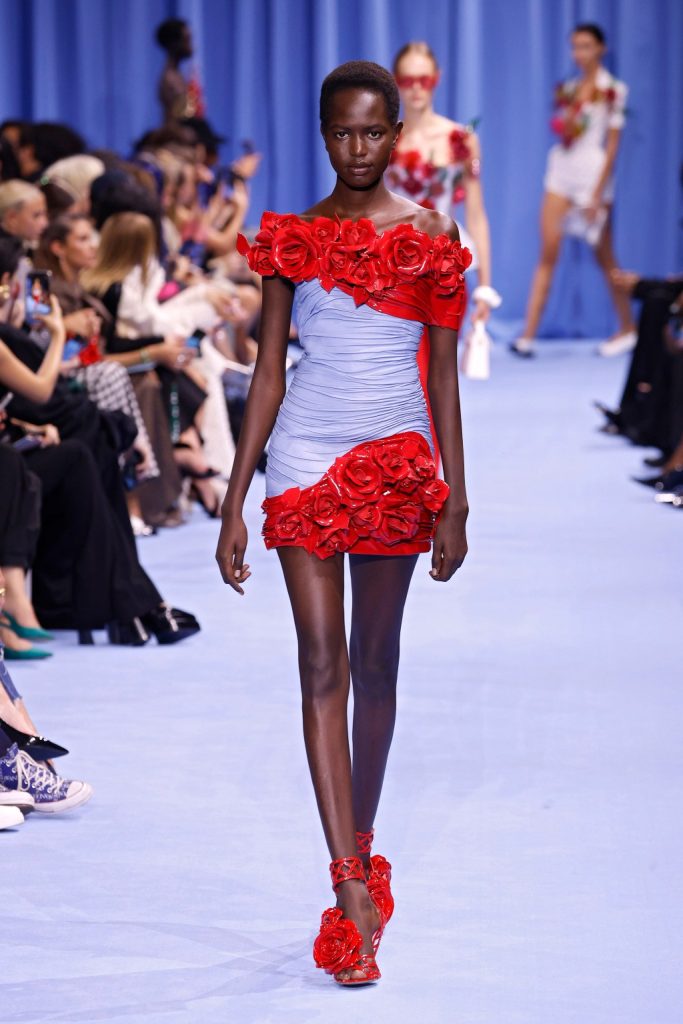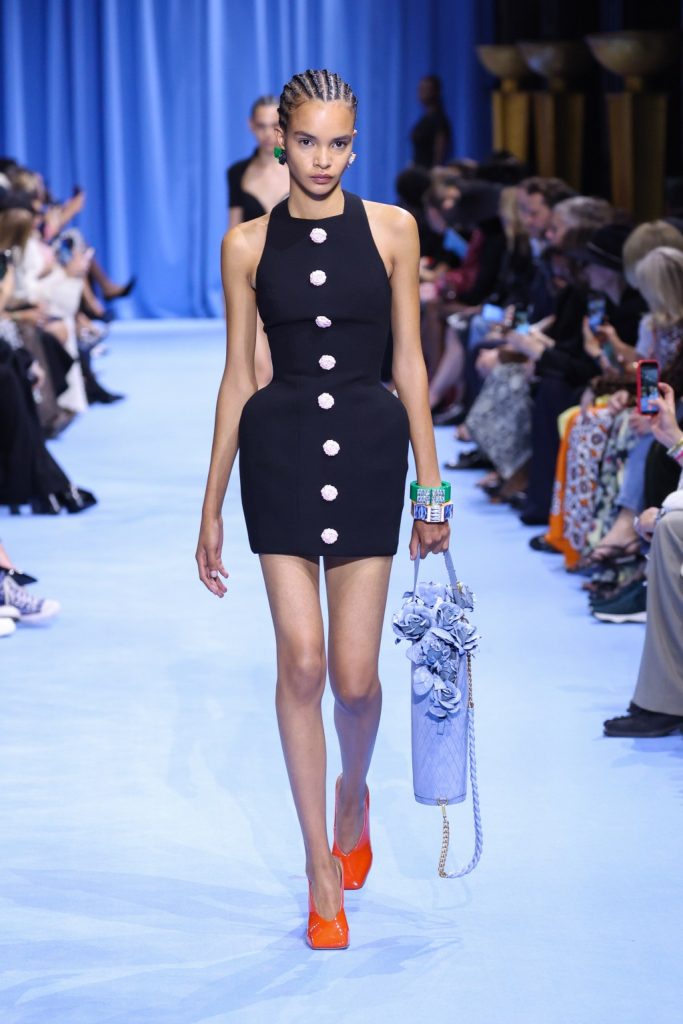
We wonder if Meryl Streep’s ice-cold Miranda Priestly—who sardonically touted “florals for spring…groundbreaking” when a fictional fashion editor suggested they do a botanical-themed main fashion shoot— would’ve given Balmain’s Spring/Summer 2024 collection her infamous pursed lips or two nods of approval. After all, the collection is titled ‘Florals For Spring’ in an homage to fashion’s disdain for the obvious motif come September.
However, in this collection, Balmain’s creative director Olivier Rousteing shifts the lexicon away from trite and contrived expressions and rather breaks new ground to sow the seeds of couture-level technically planted by Pierre Balmain himself.
It’s been a big week for Rousteing. Less than ten days ago on September 10th, 50 pieces from the French luxuriate’s SS24 collection were reportedly stolen in an alleged carjacking while en route from the airport. Rousteing and his atelier were forced to remake over “70% of the collection”, as the designer told press after the Paris Fashion Week show on Wednesday evening. The object of the thieves’ sticky fingers? “Mostly tailoring, denim, and jersey.”
Yet, despite this sartorial nightmare, Balmain presented a cohesive collection of 54 looks that returned Monsieur Balmain’s emboldened spirit to the forefront of the Maison after a reign of chintzy embellishments and hyper-structured silhouettes.
Evoking the post-war golden age of French couturiers, Rousting looked to the liberating, body-conscious shapes of the 1950s, reworking and revisiting some of the house’s signature ‘isms’ like tailored waists and bell-shaped skirts that protruded like bustles over pleated skirts or bare legs.

The first half of the collection played into these archival tropes. Gilded ornate buttons adorned the architecturally clean shapes, with each piece softened by curved accents like bowed necklines or rounded shoulders. When tailoring was sharp with jagged lapels, the ensemble was offset with saccharine skirts featuring twisted and upturned hemlines that evoked a sort of sculpted peplum finish.
However, the latter half of the collection was where Balmain cemented its status as a grand couturier house. Over sweet polka-dot prints and deliciously draped baby-blue dresses, ornamental rubbery 3D-printed flowers or intricately twisted rosettes bloomed from the bodices with enchanting wonder.

In some looks, these florals extended along a crystal-encrusted vine and poked out from the mainline of the dress to create a sense of asymmetry. Elsewhere, the grandiose pageantry of structured sequin dresses served as a form of thorn that apprehends the wearer thanks to the pieces’ rigid form.
In Balmain’s garden there’s both beauty and pain; a fitting floret for a collection marred by tragedy. But isn’t that what fashion is about? Turning torment into art, Balmain proved the Maison is in perennial bloom that sprouts despite misfortune.









This article originally appeared on Grazia International
